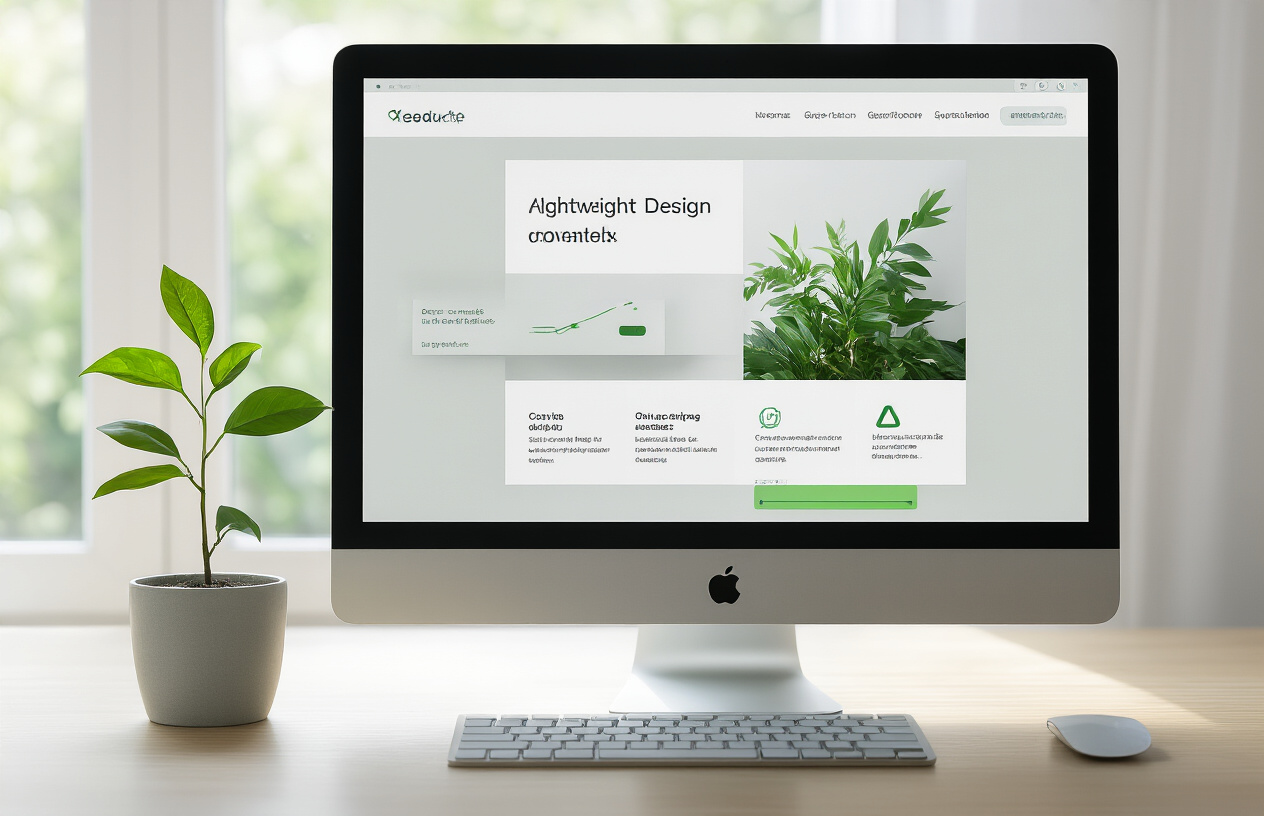
Ever felt that sinking guilt when your beautiful website takes forever to load? The average web page now weighs 2MB – that’s heavier than the original DOOM game. And guess what? Your carbon-hungry site is part of the problem.
Let’s face it: sustainable web design sounds about as sexy as a beige cardboard box. But what if I told you low-carbon web design doesn’t mean sacrificing those sleek animations or gorgeous graphics?
In this guide, I’ll show you how to slash your digital carbon footprint while keeping your site looking stunning. We’re talking practical techniques that won’t have your design team revolting or your visitors bouncing.
The secret lies in something that might surprise you…
Understanding the Environmental Impact of Web Design
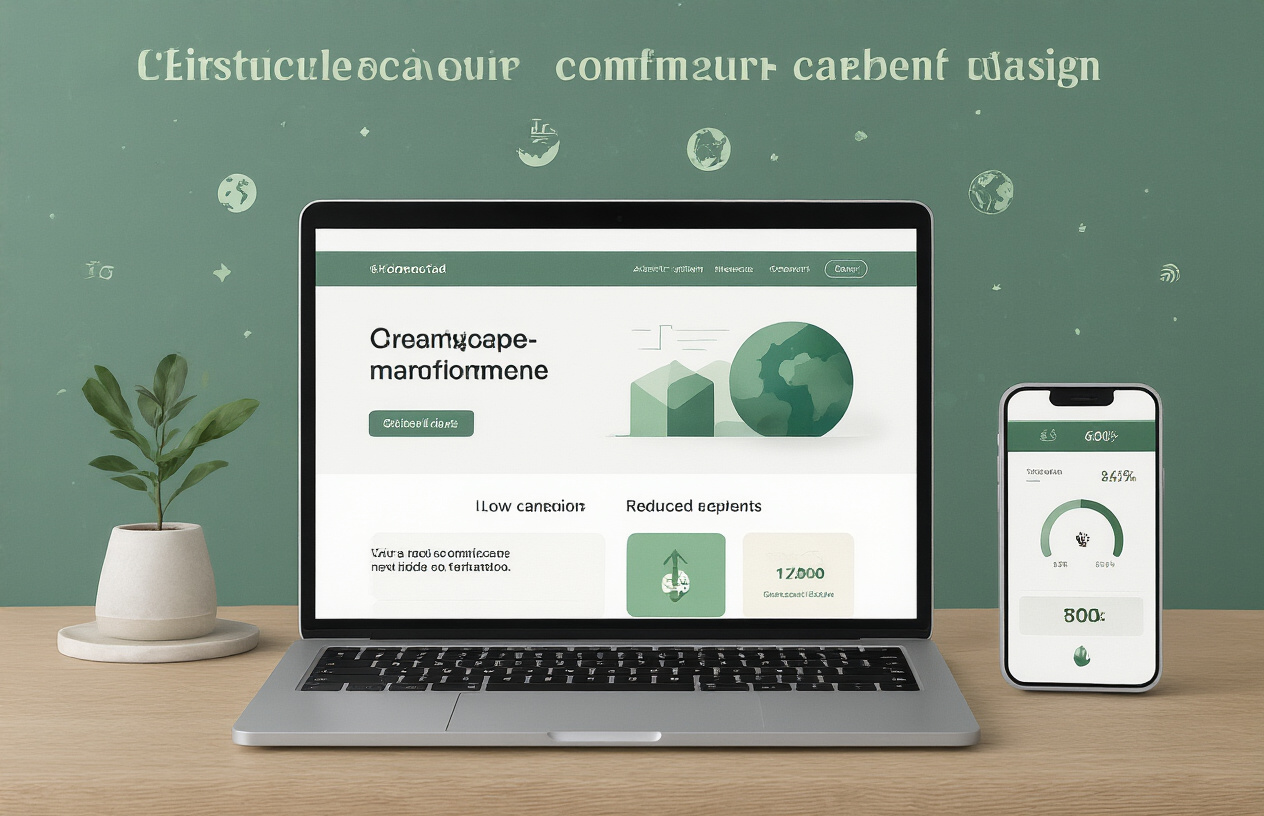
The Hidden Carbon Footprint of Digital Experiences
Every time someone visits your website, real energy is used. That gorgeous video background? It’s burning electricity somewhere. Those uncompressed images? They’re making servers work overtime.
Most of us don’t think about it, but the internet consumes about 416.2 TWh of electricity per year. That’s more than the entire United Kingdom uses annually. When you’ve got millions of people loading heavy websites day after day, that adds up to serious carbon emissions.
The problem? We can’t see these emissions. They don’t billow from our devices like smoke from a factory. But they’re there, hidden in data centers, network infrastructure, and our devices’ increased power consumption.
How Page Weight Affects Energy Consumption
Your website’s file size directly correlates with how much energy it burns. Heavier pages require:
- More processing power
- Longer load times
- More bandwidth consumption
- Increased battery drain on mobile devices
A page that’s 5MB versus 1MB doesn’t just load slower—it consumes five times the energy. Every unnecessary kilobyte is a tiny tax on the planet.
Why Sustainable Web Design Matters
Climate change isn’t waiting for us to catch up. Digital products keep multiplying while our carbon budget keeps shrinking.
Sustainable web design isn’t just good for the planet—it’s good for business too:
- Faster websites = better user experience
- Lower bounce rates = higher conversion
- Mobile optimization = broader reach
- Energy efficiency = cost savings
Making your website lighter isn’t just an environmental choice—it’s a competitive advantage.
Measuring Your Website’s Carbon Emissions
You can’t improve what you don’t measure. Thankfully, there are tools to help:
- Website Carbon Calculator gives you a quick carbon footprint estimate
- Ecograder provides sustainability scores and recommendations
- PageSpeed Insights indirectly helps by identifying performance issues
Start by establishing your baseline. How much CO2 does your site produce per pageview? How does it compare to industry standards? Once you know where you stand, you can set meaningful reduction targets.
Optimizing Images for Sustainability
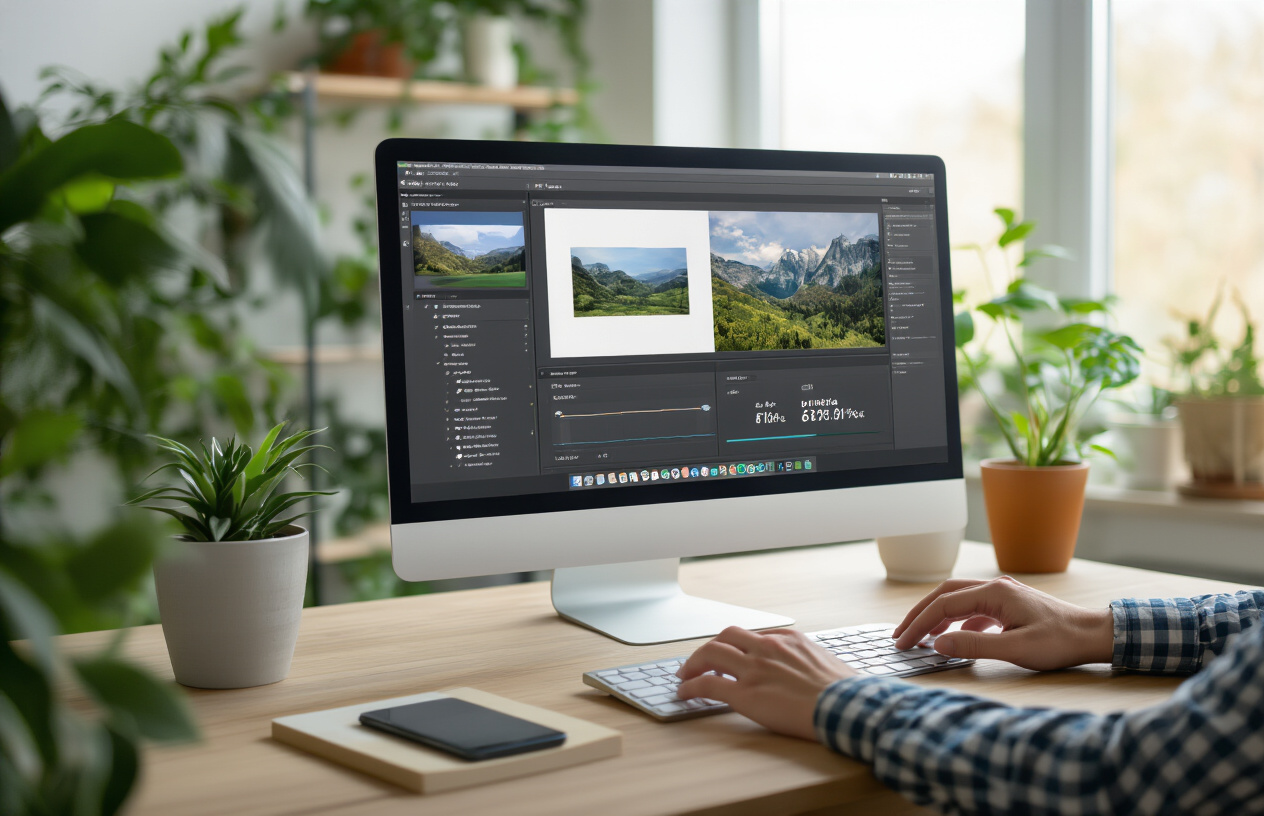
A. Choosing the Right File Formats
Images typically consume the most bandwidth on any website. Picking the correct format isn’t just about looks—it’s about finding that sweet spot between quality and file size.
JPEG works best for photographs and complex images with gradients. PNG shines when you need transparency or have graphics with text. WebP? That’s the modern hero—about 30% smaller than JPEGs with similar quality. AVIF is the new kid on the block, offering even better compression.
Quick format guide:
- Photos → JPEG or WebP
- Graphics with transparency → PNG or WebP
- Logos, icons, illustrations → SVG when possible
- Screenshots with text → PNG or WebP
B. Modern Compression Techniques That Preserve Quality
Compression doesn’t have to mean ugly images. Tools like TinyPNG, Squoosh, and ShortPixel can slash file sizes by 50-80% with barely noticeable quality loss.
The magic happens when you remove unnecessary metadata and apply smart color palette reduction. Most editing software lets you export with compression sliders—aim for 70-80% quality for web images.
For the tech-savvy: try content-aware compression that preserves details in important areas while aggressively compressing less critical parts.
C. Implementing Responsive Images
One size doesn’t fit all. Why send a 2000px image to a 320px mobile screen?
<img srcset="small.jpg 400w, medium.jpg 800w, large.jpg 1200w"
sizes="(max-width: 600px) 400px, (max-width: 1200px) 800px, 1200px"
src="fallback.jpg" alt="Responsive image example">
This tells browsers to download only what they need. The result? Mobile users might download images 70% smaller than desktop versions.
Picture elements take this further by letting you serve different formats:
<picture>
<source srcset="image.avif" type="image/avif">
<source srcset="image.webp" type="image/webp">
<img src="image.jpg" alt="Description">
</picture>
D. Lazy Loading for Reduced Initial Page Weight
Images below the fold don’t need to load immediately. Native lazy loading is beautifully simple:
<img src="heavy-image.jpg" loading="lazy" alt="Description">
This tiny attribute tells browsers: “Only download this when the user scrolls near it.” For users, pages load faster. For the planet, unnecessary data transfers drop significantly.
For more control, intersection observer-based solutions can delay loading until exactly when you want.
E. When to Use SVG Instead of Raster Graphics
SVGs are resolution-independent vector graphics that stay crisp at any size while typically weighing less than their raster counterparts.
Perfect SVG candidates:
- Logos
- Icons
- Simple illustrations
- UI elements
- Animations
A 10KB SVG icon can replace a set of PNG files that might total 100KB across various sizes. SVGs can be styled with CSS, animated, and even made interactive.
The sustainability win is massive—one file serves all screen sizes and densities, eliminating the need for multiple resolution variants.
Efficient Code and Streamlined Resources
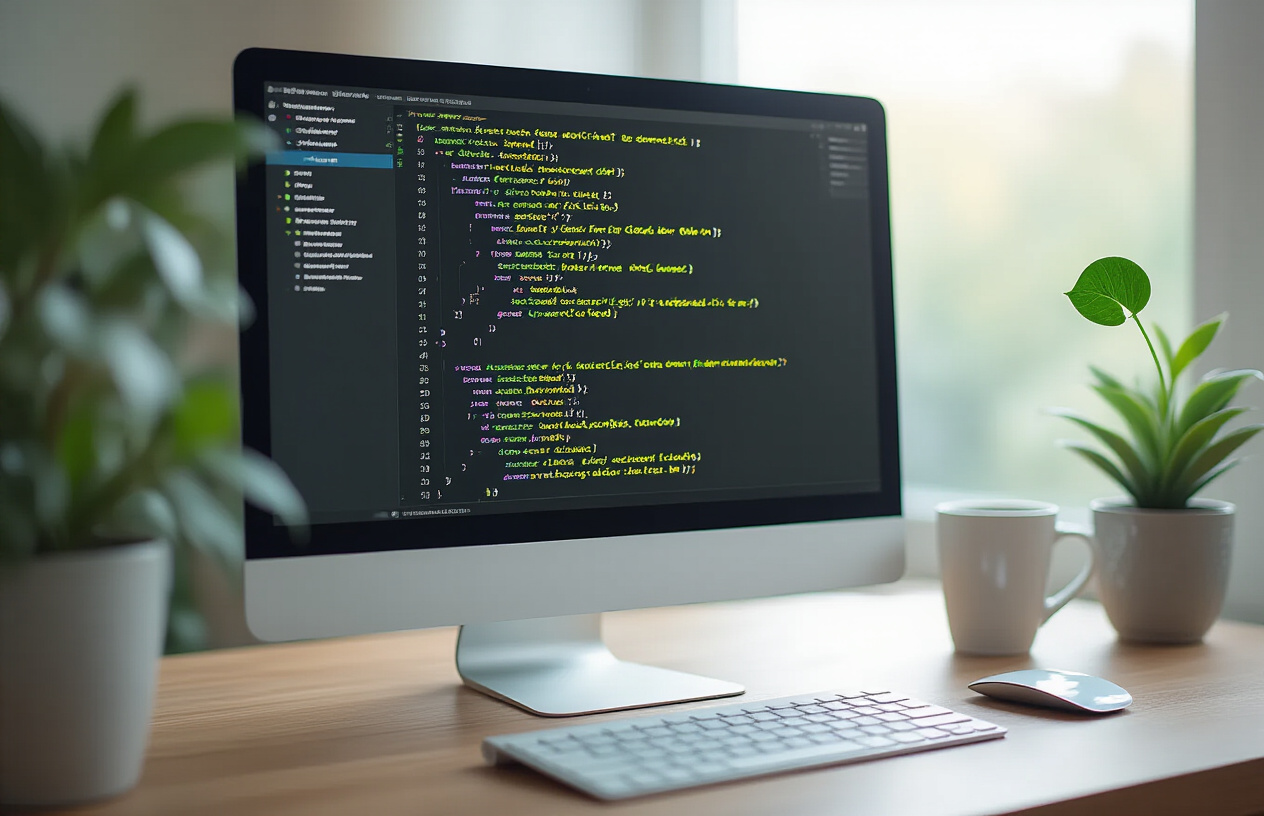
A. Minimizing CSS and JavaScript Files
Ever looked at your website’s code and thought, “What’s all this stuff doing here?”
That bloated code isn’t just messy—it’s killing your site’s carbon footprint. Minifying your CSS and JavaScript files is like digital weight loss for your website. It strips out unnecessary characters—those extra spaces, line breaks, and comments that humans need but browsers couldn’t care less about.
Tools like UglifyJS and CSSNano can shrink your files by up to 70%. That’s not just impressive; it’s game-changing for load times.
// Before minification: 45KB
function calculateTotal(price, quantity) {
// This calculates the total price
return price * quantity;
}
// After minification: 25KB
function calculateTotal(a,b){return a*b}
B. Removing Unused Code and Dependencies
We’re all guilty of it—adding that fancy library for one tiny feature, then keeping it forever.
Those unused functions and third-party dependencies? They’re the digital equivalent of leaving all your lights on when you’re not home.
Run a code coverage analysis during testing. You’ll be shocked at how much code never actually executes. PurgeCSS can identify and remove unused CSS classes, often reducing file sizes by 80-90%.
And those npm packages? Audit them regularly. That moment when you realize your weather widget is pulling in 15MB of dependencies? Yeah, that’s when you know something’s gotta change.
C. Leveraging Browser Caching
Browser caching is telling visitors’ browsers, “Hey, store this stuff so you don’t have to download it again.”
Set proper cache headers, and your returning visitors will load your site using way less data:
| Resource Type | Recommended Cache Duration |
|---|---|
| Images | 1 year |
| CSS/JS | 1 month |
| HTML | 1 day |
That’s not just theory—it’s absolute carbon reduction happening with every return visit.
D. The Performance Benefits of Static Site Generators
Dynamic sites are constantly crunching numbers server-side. Each visit means new database queries, server processing, and generated HTML.
Static site generators like Hugo, Jekyll, and Eleventy flip that model on its head. They pre-build everything at deployment time. When someone visits your site, there’s no processing—just pre-rendered files served lightning-fast.
The environmental difference is massive. A dynamic WordPress page might need 200-300ms of server processing per visit. Multiply that by thousands of visitors, and you’re burning electricity for no good reason.
Static sites also make CDN deployment trivial, meaning your content gets served from the data center closest to each visitor—shorter digital journeys mean less energy used.
Web Fonts and Typography Optimization
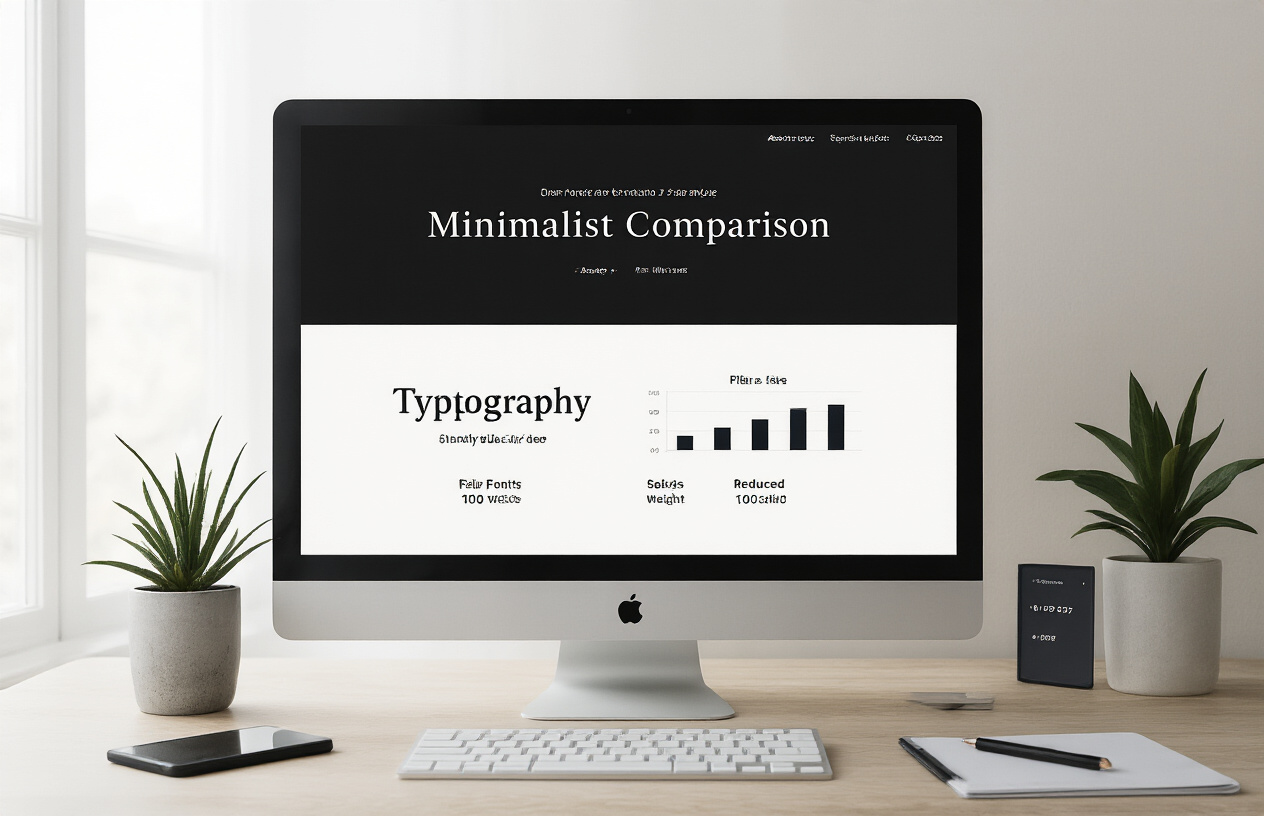
A. Reducing Font File Sizes Without Sacrificing Readability
Typography plays a huge role in web design, but those beautiful fonts can seriously bloat your page weight. Most custom web fonts clock in between 20KB and 250KB each—multiply that by several weights and styles, and you’re looking at megabytes just for text!
You don’t need to ditch gorgeous typography to go green. Try these quick wins:
- Convert your fonts to WOFF2 format, which typically slashes file sizes by 30%
- Limit font weights to what you use (do you need light, regular, medium, semibold, AND bold?)
- Remove unused characters and glyphs from your font files
- Host fonts locally instead of calling Google Fonts (saves an extra HTTP request)
B. System Fonts: The Eco-Friendly Alternative
The most sustainable font? The one already installed on your user’s device.
System font stacks have come a long way since the days of “Arial or bust.” Modern system fonts look surprisingly good:
font-family: -apple-system, BlinkMacSystemFont, "Segoe UI", Roboto, Oxygen, Ubuntu, Cantarell, "Open Sans", "Helvetica Neue", sans-serif;
This stack delivers a native-looking font on virtually any device with zero download cost. Sites like GitHub, Medium, and even Twitter have embraced system fonts without looking generic or boring.
C. Subsetting Fonts for Faster Loading
Font files contain hundreds of characters you’ll probably never use. Why make users download Cyrillic characters when your site’s only in English?
Subsetting removes unnecessary glyphs from font files, often shrinking them by 60-80%. Tools like Glyphhanger can automatically analyze your content and create perfectly trimmed font files.
For a multilingual site, consider loading language-specific subsets only when needed:
<link rel="preload" href="fonts/japanese-subset.woff2" as="font" type="font/woff2" crossorigin>
D. Variable Fonts: One File, Multiple Styles
Variable fonts are a game-changer for sustainable typography. Instead of loading separate files for light, regular, bold, and italic versions, a single variable font file contains all variations along multiple axes.
Google’s Roboto Flex variable font weighs just 137KB but replaces what would traditionally require 6-12 separate font files totaling 5000 KB or more.
The magic happens through “axes” that control weight, width, slant, and other properties:
.headline {
font-weight: 650;
font-stretch: 110%;
font-optical-sizing: auto;
}
Not only do variable fonts reduce HTTP requests and download size, but they also give designers more creative freedom with fewer environmental consequences.
Design Strategies That Balance Aesthetics and Efficiency

A. Embracing Minimalism Without Looking Generic
Gone are the days when minimalism meant boring white space and lifeless design. Today’s clever minimalism packs a punch while keeping file sizes tiny.
The trick? Be intentional with every element. Instead of adding more stuff, make each component work harder. A single bold typeface can create more impact than five different fonts fighting for attention.
Want to stand out from the sea of lookalike minimalist sites? Develop a distinctive visual element—maybe an unusual grid system or a signature layout approach—that becomes your brand fingerprint without adding weight.
Some easy wins:
- Replace complex UI patterns with simpler alternatives that maintain functionality
- Choose one standout visual element rather than many competing ones
- Embrace negative space as an active design element, not just “emptiness.”
B. Using Color and Space Strategically
Color is practically weightless yet incredibly powerful. A thoughtful color palette can create emotional impact without a single extra kilobyte. Brilliant designers use color psychology to their advantage. A strategic splash of vibrant color against a neutral background creates focal points that guide users’ attention exactly where you want it.
Space isn’t just the absence of content—it’s a design tool itself. Generous whitespace improves readability and focus while naturally reducing page elements.
Try this approach:
- Define a limited palette (3-5 colors max)
- Establish a consistent spacing system
- Use color to highlight key interactions and CTAs
C. Animation and Interaction That Won’t Bloat Your Site
Animation doesn’t have to be a performance killer. CSS-based animations and transitions can add delight and functionality with minimal overhead.
The golden rule: animate properties that browsers can optimize. Stick to transforms and opacity changes whenever possible—the GPU handles them and won’t cause layout recalculations.
Micro-interactions create an emotional connection without heavy resources. A subtle button state change or a smooth transition between screens can feel magical while adding just a few lines of CSS.
Animations should serve a purpose:
- Guide attention
- Provide feedback
- Establish relationships between elements
- Enhance brand personality
D. Creating Visual Impact Through Smart Design Choices
Typography is your secret weapon. A distinctive font pairing can define your entire aesthetic while adding minimal weight, especially with variable fonts that pack multiple weights into a single file.
Contrast creates drama without bytes. Play with scale, weight, and spacing to create hierarchy and visual interest. A giant headline followed by tiny text creates tension and excitement, grabbing attention.
Photography still has a place in low-carbon design—just be strategic. One perfect hero image can set the tone for your entire site. Use art direction to load different-sized images based on screen size.
E. Case Studies: Beautiful Websites With Tiny Footprints
Low Tech Magazine: This solar-powered website uses dithered images and bare-bones HTML/CSS to create a distinctive visual style while staying under 1MB per page. Their design choices aren’t just sustainable—they’re what make the site memorable.
Organic Basics: Their “low impact website” version reduces data transfer by 70% through bright image loading, static rendering, and reduced JavaScript. The simplified aesthetic enhances their minimalist brand identity.
Gov.uk: The UK government’s website proves institutional sites don’t need bloat. Their design system focuses on typography and spacing to create clarity without decorative elements, making it both accessible and lightweight.
These examples show that constraints breed creativity. By embracing performance limits as design challenges, these sites found unique visual languages that distinguish them from competitors while reducing their carbon footprint.
Testing and Monitoring for Continuous Improvement
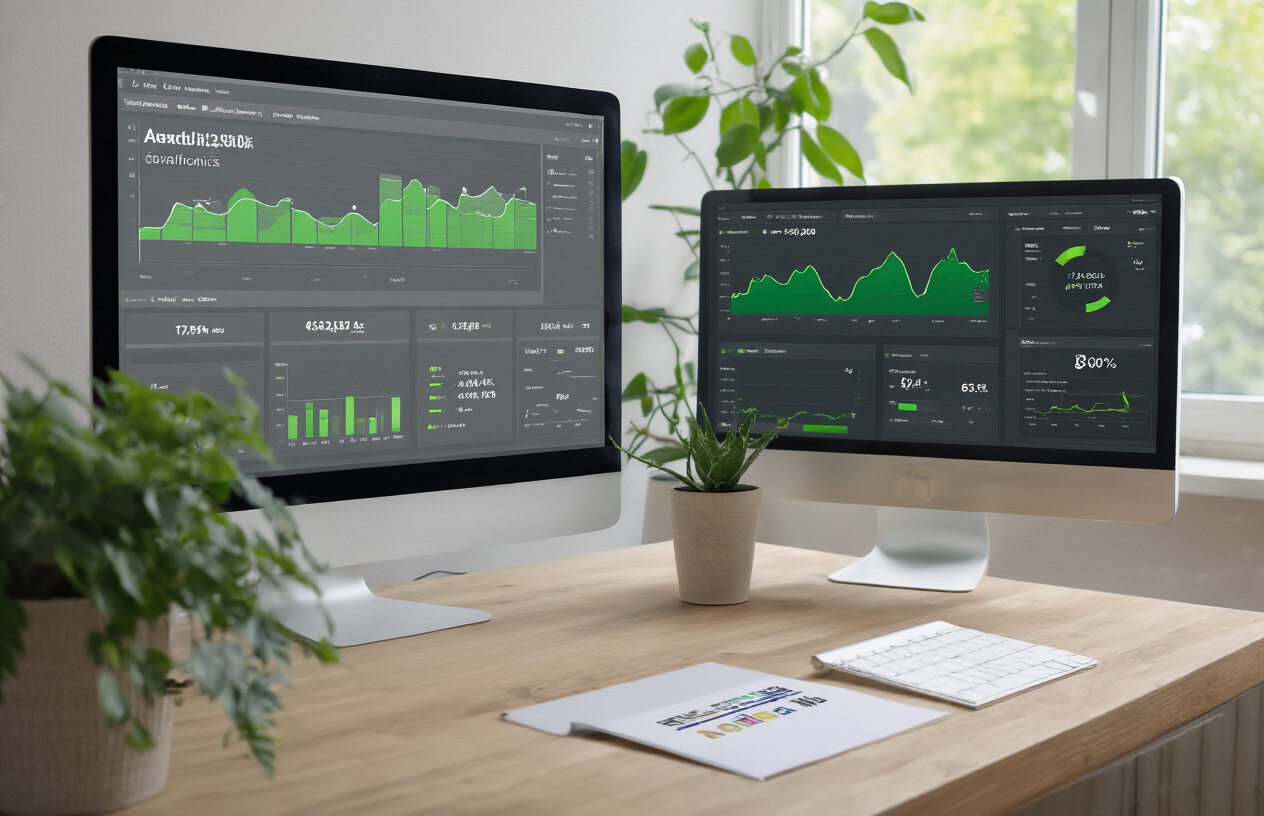
Essential Tools for Measuring Page Weight
Want to slim down your site but don’t know where to start? You need the right measurement tools in your toolkit:
- Google Lighthouse: Built right into Chrome DevTools, giving you quick performance scores and actionable suggestions.
- WebPageTest: The granddaddy of performance testing that simulates real-world conditions across different devices and connection speeds.
- GTmetrix: Combines Lighthouse and PageSpeed insights with easy-to-understand grades and recommendations.
- Website Carbon Calculator: Specifically measures your site’s carbon footprint – a unique angle most other tools miss.
Each request, image, font, and script adds weight. These tools break down exactly what’s slowing you down.
Establishing Performance Budgets
Performance budgets aren’t just fancy tech talk. They’re your line in the sand.
Set hard limits on:
- Total page weight (aim for under 1MB)
- Maximum image sizes (250KB per image is generous)
- Third-party script count (each one is a carbon cost)
- Time-to-interactive (under 3 seconds keeps visitors happy)
When someone on your team wants to add that shiny new animation library, you can point to the budget and ask, “What are we removing to make room?”
The best part? Performance budgets make sustainability measurable and accountable.
A/B Testing for Sustainability Improvements
The beauty of A/B testing for sustainability? You don’t have to guess what works.
Try running these experiments:
- Test AVIF images against WebP and JPG
- Compare lazy-loaded content versus immediate loading
- Measure server response times with and without CDN caching
Track not just performance metrics but also user engagement. Sometimes, a slightly heavier page that keeps users from bouncing saves energy in the long run.
Document everything. That 0.5-second improvement might seem small, but multiply it by thousands of visitors, and you’ve saved real energy.
Automated Checks to Prevent Regression
Here’s the hard truth: websites get heavier over time. It’s almost a law of nature.
Combat the bloat with:
- Pre-commit hooks that flag oversized assets
- CI/CD pipelines that automatically test page weight
- Scheduled audits that alert you when performance drops
- Lighthouse budget configurations that fail builds when they exceed limits
One oversized hero image slipping through can undo months of optimization work. Automation catches what tired eyes miss.
Make these checks part of your workflow, not something you remember to do once a quarter. Your users (and the planet) will thank you.
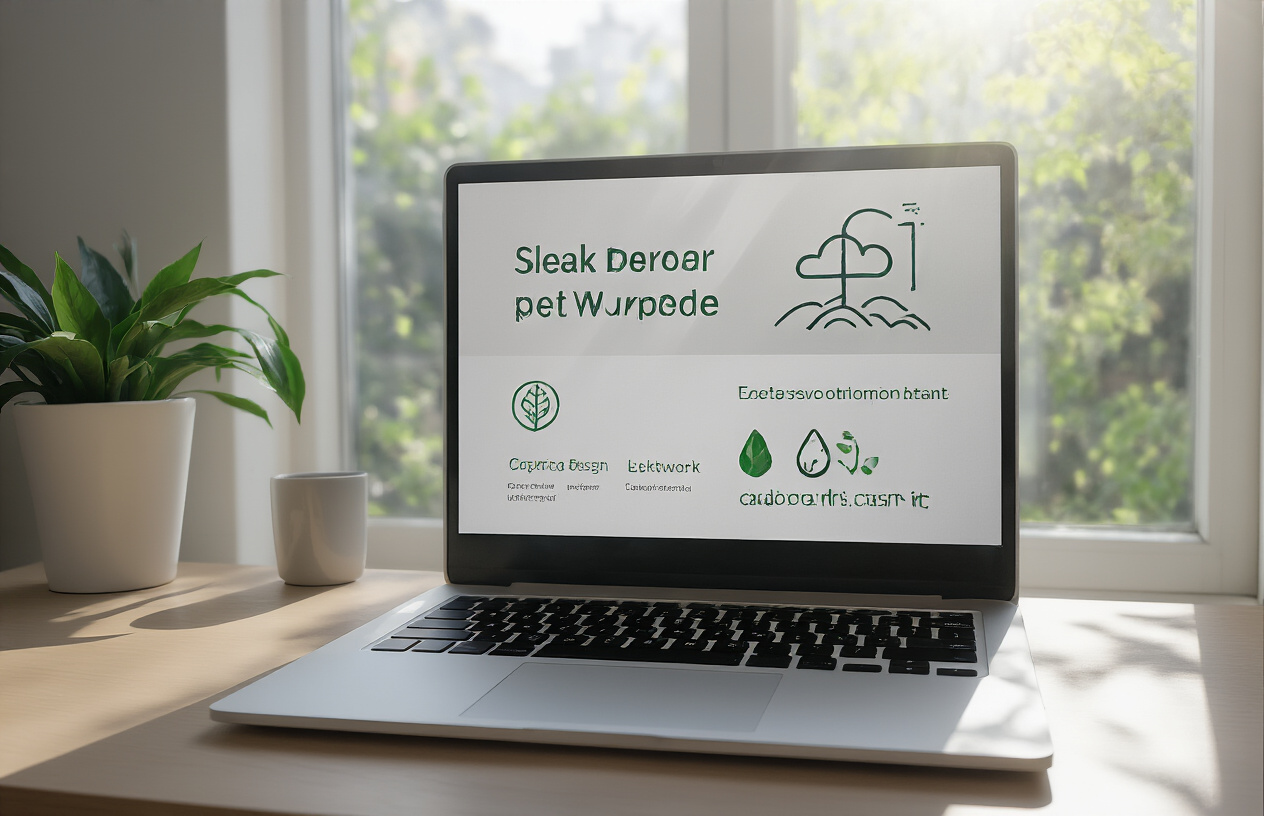
Reducing your website’s carbon footprint doesn’t mean sacrificing visual appeal or user experience. By implementing thoughtful image optimization, writing efficient code, carefully selecting web fonts, and embracing minimalist design principles, you can create beautiful websites that load quickly and consume less energy. These practices benefit both the environment and your users, who will appreciate faster loading times and responsive experiences.
Start by analyzing your current website’s environmental impact, then implement changes incrementally while measuring results. Remember that sustainable web design is an ongoing process, not a one-time fix. As technologies evolve, continue testing and refining your approach to balance aesthetic considerations with environmental responsibility. Your efforts contribute to a more sustainable digital ecosystem while potentially improving key metrics like bounce rates and conversions.
Adopting a Low‑Carbon Web Design approach means building faster, lighter, and more sustainable digital experiences. Whether you’re streamlining performance with Page Speed Optimization, creating focused content through WordPress Content Creation, or guiding digital impact strategy as a Technical Project Manager, reducing carbon load aligns design excellence with environmental responsibility. Explore sustainable design practices in our Low‑Carbon Web Design hub.


